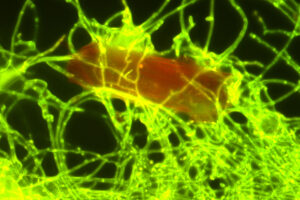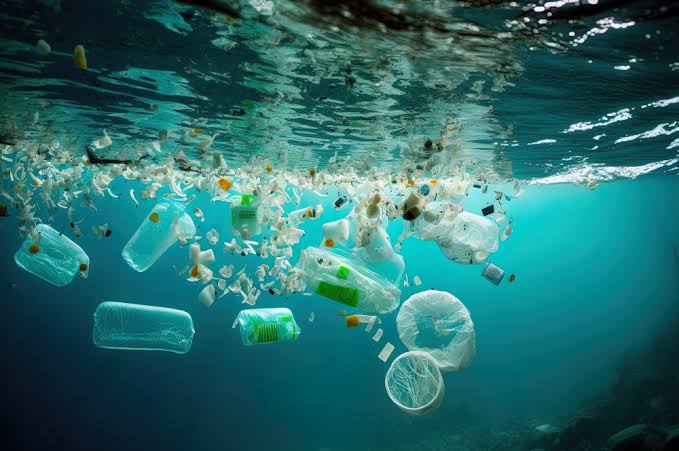Researchers from the Royal Netherlands Institute for Sea Research (NIOZ) published a study in the scientific journal Science of the Total Environment. Their findings reveal that a specific sea fungus can break down plastic polyethylene, but only after exposure to sunlight’s UV radiation.
Every year, humans produce more than 430 million tonnes of plastic, and this is expected to have at least triple by the year 2060. Much of the plastic waste ends up in the sea: from the poles to the tropics, it floats around in surface waters, reaches greater depths at sea and eventually falls down on the seafloor and less than 10 per cent has been recycled.
The urgent need to find plastic-degrading organisms has led researchers to exciting discoveries. For example, scientists at the University of California, San Diego identified plastic-eating bacteria that could help curb plastic pollution by biodegrading plastic.
Marine microbiologists from the Royal Netherlands Institute for Sea Research (NIOZ) discovered that the fungus ‘Parengyodontium’ lives together with other marine microbes in thin layers on plastic litter in the ocean and it’s capable of breaking down particles of the plastic polyethylene (PE).
The researchers sampled plastic degrading microbes in the hotspots of plastic pollution in the North Pacific Ocean. From the plastic litter collected, they isolated the marine fungus by growing it in the laboratory on plastics containing traceable carbon isotopes.
 Lead author Annika Vaksmaa of NIOZ said, “These so-called 13C isotopes remain traceable in the food chain. It is like a tag that enables us to follow where the carbon goes. We can then trace it in the degradation products.”
Lead author Annika Vaksmaa of NIOZ said, “These so-called 13C isotopes remain traceable in the food chain. It is like a tag that enables us to follow where the carbon goes. We can then trace it in the degradation products.”
Regarding the new discovery, Vaksmaa expressed joy, saying, “What makes this research scientifically outstanding is that we can quantify the degradation process.”
She added, “Our measurements also showed that the fungus doesn’t use much of the carbon coming from the PE when breaking it down. Most of the PE that P. album uses is converted into carbon dioxide, which the fungus excretes again.”
Vaksmaa explains: “In the lab, P. album only breaks down PE that has been exposed to UV-light at least for a short period of time. That means that in the ocean, the fungus can only degrade plastic that has been floating near the surface initially. It was already known that UV-light breaks down plastic by itself mechanically, but our results show that it also facilitates the biological plastic breakdown by marine fungi.”
Vaksmaa expects that there are other, yet unknown fungi out there that are degrading plastic as well, in deeper parts of the ocean. “Marine fungi can break down complex materials made of carbon. There are numerous of marine fungi, so it is likely that in addition to the four species identified so far, other species also contribute to plastic degradation. There are still many questions about the dynamics of how plastic degradation takes place in deeper layers,” says Vaksmaa.

